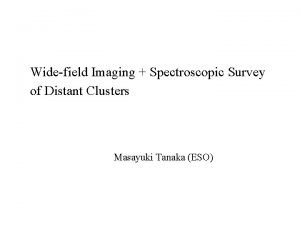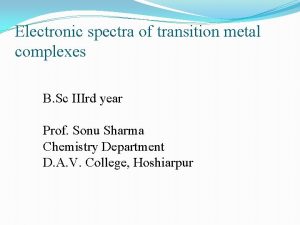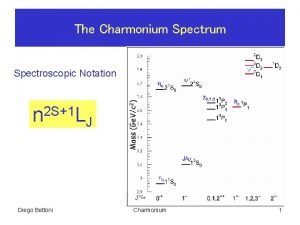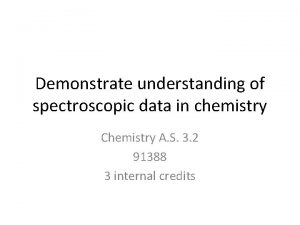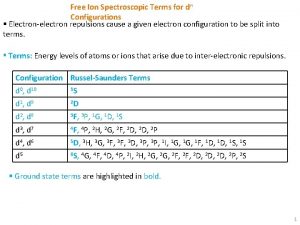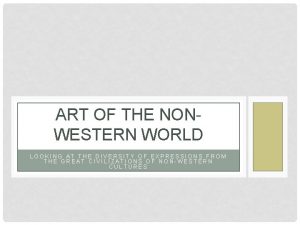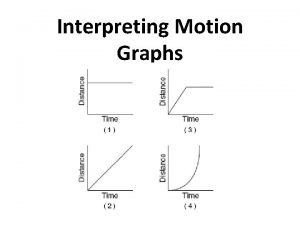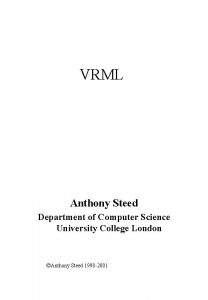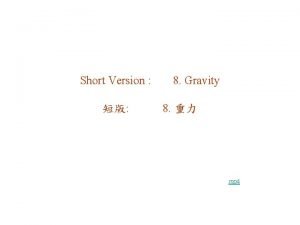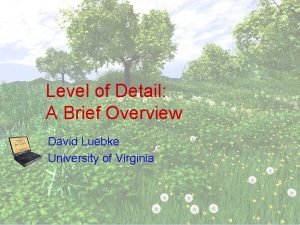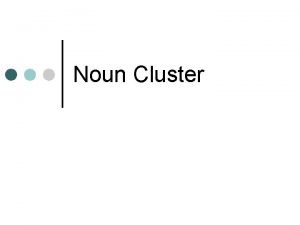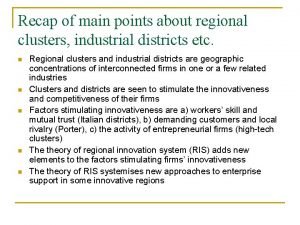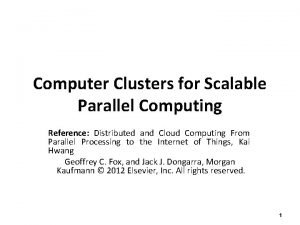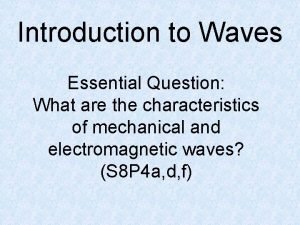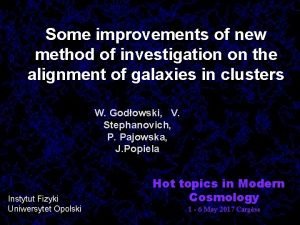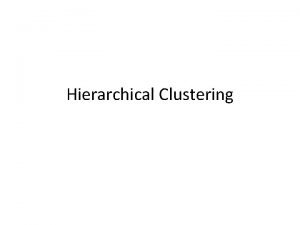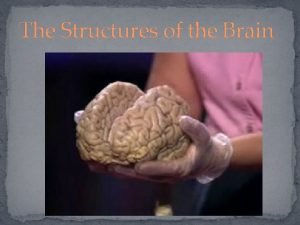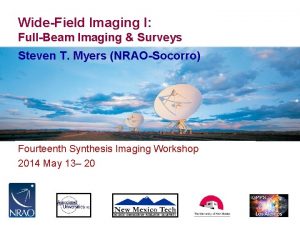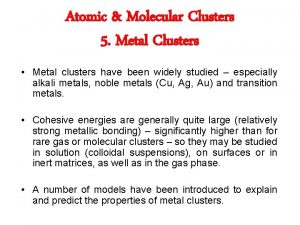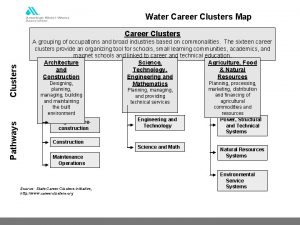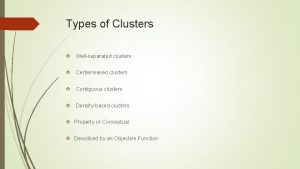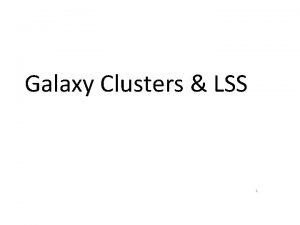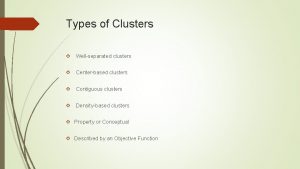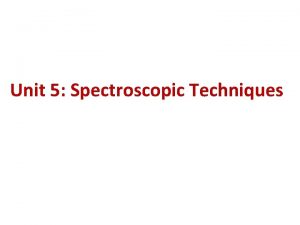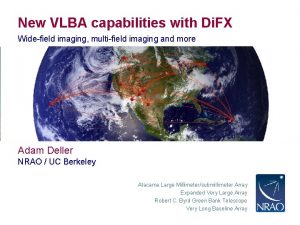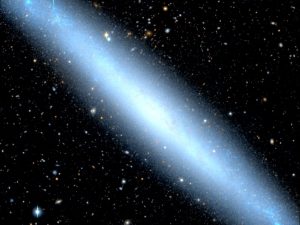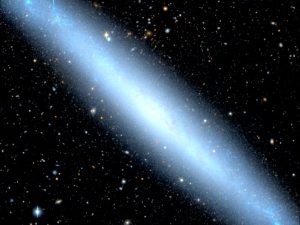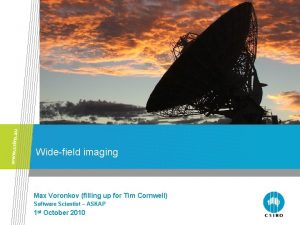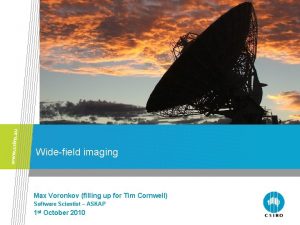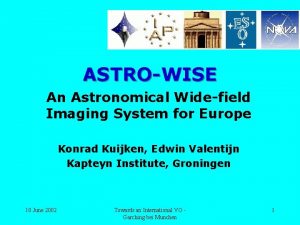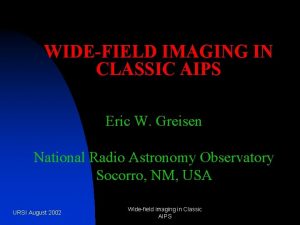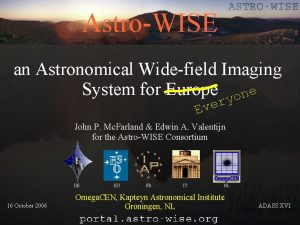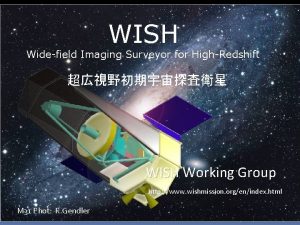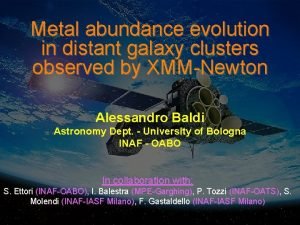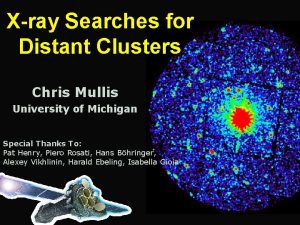Widefield Imaging Spectroscopic Survey of Distant Clusters Masayuki


![Pi·sces [pahy-seez, pis-eez] -n. 1. A constellation in the equatorial region of the Northern Pi·sces [pahy-seez, pis-eez] -n. 1. A constellation in the equatorial region of the Northern](https://slidetodoc.com/presentation_image/e50df7e931da5f3597337c08e40bc272/image-3.jpg)































- Slides: 34

Wide-field Imaging + Spectroscopic Survey of Distant Clusters Masayuki Tanaka (ESO)

Outline of this talk 1 – PISCES project 2 – Large-scale structures around distant clusters 3 – Build-up of the red sequence at z<1. 3 4 – Spectral Diagnostics 5 – From the Cradle to the Grave 6 – Summary
![Pisces pahyseez piseez n 1 A constellation in the equatorial region of the Northern Pi·sces [pahy-seez, pis-eez] -n. 1. A constellation in the equatorial region of the Northern](https://slidetodoc.com/presentation_image/e50df7e931da5f3597337c08e40bc272/image-3.jpg)
Pi·sces [pahy-seez, pis-eez] -n. 1. A constellation in the equatorial region of the Northern Hemisphere near Aries and Pegasus. Also called Fishes. 2. a. The 12 th sign of the zodiac in astrology. Also called Fishes. b. pl. Pisces One who is born under this sign. 3. A deep, wide-field survey of galaxy clusters at 0. 4<z<1. 3. outline 1 – pisces project 2 – large-scale structures around distant clusters 3 – the build-up of the red sequence 4 – spectral diagnostics 5 – from the cradle to the grave 6 – summary 1 – PISCES project

PISCES project (in A&A abstract format) Aims: Our goal is to quantify galaxy properties as functions of environment, mass, and time and understand how and when the environmental dependence of galaxy properties is established. Methods: We carry out a systematic, deep (~M*+4), wide-field (30’x 30’), optical-near. IR imaging + spectroscopic survey of distant clusters. Results: Some of our recent results are presented in this talk. Conclusions: Our survey is not finished yet, so…. . we will see. For details, see Kodama+ 2005 PASJ, 57, 309

ACS/ HST CL 0016+16 at z=0. 55 BVRiz photometry + 150 spec. objects

RXJ 0152 -13 at z=0. 83 VRiz. K photometry + 200 spec. objects

RDCSJ 0910 at z=1. 1 VRiz. K photometry + some spec. objects

RDCSJ 1252 at z=1. 24 VRiz. K photometry + some spec. objects

Large-scale structure in the local Universe outline 1 – pisces project 2 – large-scale structures around distant clusters 3 – the build-up of the red sequence 4 – spectral diagnostics 5 – from the cradle to the grave 6 – summary 2 – Large-scale structures around distant clusters

Large-Scale Structures at z=0. 55 ~70, 700 objects ~3, 600 objects 0. 48<zphot<0. 60 CL 0016 at z=0. 55 (Tanaka+ MNRAS, 2007, 379, 1546)

Large-Scale Structures at z=0. 55 cluster redshift ~3, 600 objects 0. 48<zphot<0. 60 CL 0016 at z=0. 55 (Tanaka+ MNRAS, 2007, 379, 1546)

Large-Scale Structures at z=0. 83 0. 76<zphot<0. 88 red galaxies blue galaxies RXJ 0153 at z=0. 83 Tanaka+ 2006 MNRAS, 365, 1392

Large-Scale Structures at z=0. 83 spec. objects at 0. 82<z<0. 85 z=0. 837 z=0. 844 z=0. 839 z=0. 844 z=0. 842 z=0. 782 z=0. 745 z=0. 835 0. 76<zphot<0. 88 RXJ 0153 at z=0. 83

Large-Scale Structures at z=1. 1 RDCSJ 0910 at z=1. 1

Large-Scale Structures at z=1. 2 1. 17<zphot<1. 31 RDCSJ 1252 at z=1. 24 Tanaka+ 2007 a MNRAS, 377, 1206

Close-up views of the clumps

galaxies come in two flavours. . . red blue bright outline 1 – pisces project 2 – large-scale structures around distant clusters 3 – the build-up of the red sequence 4 – spectral diagnostics 5 – from the cradle to the grave 6 – summary faint 3 – Build-up of the red sequence

Colour-Magnitude Diagrams at z<0. 83 red blue bright faint Tanaka+ 2005 MNRAS, 362, 268

Colour-Magnitude Diagrams at z=1. 1 (preliminary!) RDCSJ 0910 at z=1. 1

Colour-Magnitude Diagrams at z=1. 2 RDCSJ 1252 at z=1. 24 18 20 22 24 Ks Main Cluster Lidman et al. 2004 A&A 26 18 20 22 Ks Composite Group Tanaka et al. 2007 a MNRAS 24

Colour-Magnitude Diagrams at z=1. 2 1 – The bright-end of the red sequence appears first and the faint end appears later. 2 – The build-up of the red sequence is ‘delayed’ in low-density environments. Main Cluster Lidman et al. 2004 A&A Composite Clump Tanaka et al. 2007 a MNRAS

outline 1 – pisces project 2 – large-scale structures around distant clusters 3 – the build-up of the red sequence 4 – spectral diagnostics 5 – from the cradle to the grave 6 – summary z=1. 24 : RDCSJ 1252 z=1. 1 : RDCSJ 0910 z=0. 83 : RXJ 0152 z=0. 81 : RXJ 1716 z=0. 55 : CL 0016 z=0 : Sloan Survey 4 – Spectral Diagnostics

composite spectra of red galaxies at z~0. 8

composite spectra of red galaxies at z~0. 5

composite spectra of red galaxies at z=0

Spectral Diagnostics Redshift z~0. 8 z~0. 5 Field Group Cluster No clear CMR at bright end Tight CMR EW[OII]=14 A EW[OII]=4 A No [OII] No strong Hd Strong Hd CMR at bright end EW[OII]=4 A Strong Hd z~0 No strong Hd Tight CMR No [OII] No strong Hd Red galaxies are consistent with passive evolution no [OII], no strong Hd The strong Hd is suggestive of a sharp decline in star formation rates.

Fast Facts of Environmental Mechanisms mechanisms galaxy-galaxy interactions harassment ram-pressure stripping strangulation star formation effective env. <<1 Gyr field/group ? cluster <<1 Gyr cluster ~1 Gyr group/cluster

Fast Facts of Environmental Mechanisms mechanisms star formation galaxy-galaxy interactions harassment ram-pressure stripping strangulation effective env. <<1 Gyr field/group ? cluster <<1 Gyr cluster ~1 Gyr group/cluster For more detailed discussions, see Tanaka+ 2007 MNRAS, 379, 1546

outline 1 – pisces project 2 – large-scale structures around distant clusters 3 – the build-up of the red sequence 4 – spectral diagnostics 5 – from the cradle to the grave 6 – summary 5 – From the Cradle to the Grave

Clusters at High/Low Redshifts Proto-clusters at z=5. 7 can be traced by young, forming galaxies (Ouchi+ '05). Clusters at z=0 are filled with red and dead galaxies.

Galaxy clusters change their nature from the cradle to the grave. . . Key question : “How and when do they change? ”

Key epoch: redshift around 2 Probing z~2 clusters would give us a hint for the origin of the environmental dependence of galaxy properties. PKS 1138 cluster at z=2. 16 RDCSJ 1252 cluster at z=1. 24 (Tanaka+ '07): Red gals have already (Kurk+ '04): Red and blue gals coexit? become the dominant population.

outline 1 – pisces project 2 – large-scale structures around distant clusters 3 – the build-up of the red sequence 4 – spectral diagnostics 5 – from the cradle to the grave 6 – summary Oktoberfest in Munich 6 – Summary

Summary Galaxies follow the 'environment-dependent down-sizing' evolution. Galaxy-galaxy interactions may be the driving process of this evolution. Probing clusters at z~2 with next generation surveys would be interesting. Environment Mass
 Masayuki tanaka
Masayuki tanaka Frc control system
Frc control system Electronic spectra of transition metal complexes
Electronic spectra of transition metal complexes Spectroscopic notation
Spectroscopic notation Spectroscopic data in chemistry
Spectroscopic data in chemistry Free ion terms
Free ion terms Non western artists
Non western artists Interpreting motion graphs
Interpreting motion graphs Distant
Distant Distant
Distant A dangerous whirlpool personified as a female sea monster
A dangerous whirlpool personified as a female sea monster Distant retrograde orbit
Distant retrograde orbit Peace is not merely a distant goal
Peace is not merely a distant goal Specific objectives of teaching mathematics
Specific objectives of teaching mathematics Dips his wings in the orange sun rays meaning
Dips his wings in the orange sun rays meaning David luebke
David luebke Distant past tense
Distant past tense Abcd atls
Abcd atls Lower brain
Lower brain Mcis career clusters
Mcis career clusters Noun form of fragmented
Noun form of fragmented Regional clusters
Regional clusters Guide to computer forensics and investigations
Guide to computer forensics and investigations Computer clusters for scalable parallel computing
Computer clusters for scalable parallel computing Types of waves quad clusters
Types of waves quad clusters Career cluster definition
Career cluster definition Galaxy clusters
Galaxy clusters Iseek career cluster interest survey
Iseek career cluster interest survey 16 career clusters worksheets
16 career clusters worksheets Launchpad fcs
Launchpad fcs Vawizard.org
Vawizard.org Complete link clustering
Complete link clustering Cluster a personality disorders
Cluster a personality disorders Two almond shaped neural clusters
Two almond shaped neural clusters Empty space between traffic clusters
Empty space between traffic clusters
